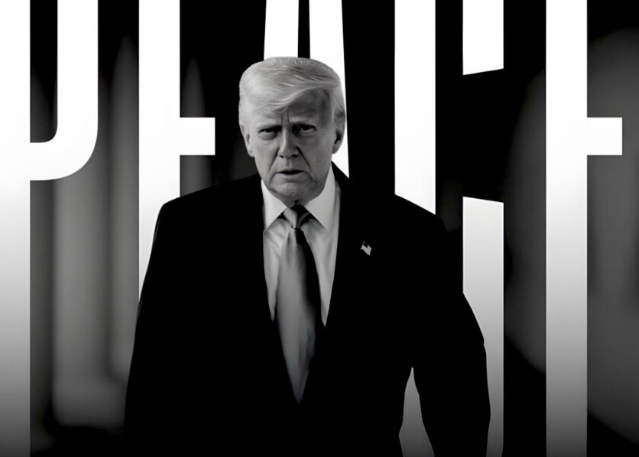Iranian Nuclear Capabilities Obliterated:President Donald Trump’s Operation against Iran’s nuclear program has received unanimous global validation, with experts, intelligence agencies, and nuclear watchdogs confirming years of setback for Iran. Key sites like Natanz, Fordow, and Esfahan have been obliterated, with assessments showing catastrophic damage across all nuclear infrastructure.
Iranian Nuclear Capabilities Obliterated: Global Experts Confirm
In what many are calling one of the most decisive military actions in recent history, President Donald J. Trump has overseen a strike that has left Iran’s nuclear program in ruins. Experts across the international spectrum — from intelligence agencies to nuclear watchdogs — are unanimous in their assessment: Iran’s nuclear infrastructure has suffered irreparable damage, setting the nation back by years.
Director General of the International Atomic Energy Agency, Rafael Grossi, stated that the vibrations alone from the massive U.S. bombardment were enough to destroy Iran’s centrifuges, which are sensitive, precision-built machines. “We already know that these centrifuges are no longer operational,” Grossi remarked, emphasizing the scale of the destruction.
CIA Director John Ratcliffe added that fresh intelligence, confirmed by long-trusted sources, indicates Iran’s nuclear capabilities were not just damaged but fundamentally compromised. “Several key Iranian nuclear facilities were destroyed and would have to be rebuilt over the course of years,” Ratcliffe confirmed.
Director of National Intelligence Tulsi Gabbard explained that all three critical nuclear sites — Natanz, Fordow, and Esfahan — were entirely devastated. She pointed out that attempts to downplay the success of the operation by leaking classified reports omit crucial context, especially that some assessments had “low confidence” disclaimers. Gabbard emphasized that the mission was flawlessly executed and served to protect American lives.
Former National Intelligence Manager for Iran, Norman Roule, described the strike as “catastrophic” and assured that Iran’s ambitions were rolled back for a “very, very long time.” Retired General Philip Breedlove, former NATO Supreme Allied Commander, praised the precision of the strikes, stating, “They did it perfectly.”
David Albright, President of the Institute for Science and International Security, revealed that Iran has lost the ability to manufacture new centrifuges and cannot continue producing nuclear gas. This development, he said, leaves their program “severely damaged.”
President Trump hailed the mission’s success, highlighting satellite imagery that showed catastrophic damage even deep underground. “Obliteration is an accurate term,” Trump said, pointing out that the most substantial damage took place beneath rock and concrete shielding.
The Israeli Atomic Energy Commission confirmed the assessment, declaring the Fordow enrichment facility inoperable and estimating that Iran’s nuclear weapons program has been set back by many years. According to their report, continued isolation from nuclear materials could prolong this damage indefinitely.
Israel Defense Forces Chief of Staff, Lt. Gen. Eyal Zamir, supported this view, stating, “We significantly damaged the nuclear program and set it back by years, I repeat, years.”
Even Iran’s own Foreign Ministry spokesman, Esmaeil Baghaei, conceded that the installations were “badly damaged.”
Vice President JD Vance reassured the American public that Iran’s nuclear capabilities have been dismantled far more thoroughly than expected. He emphasized the goal of the mission was to destroy Fordow, a goal he confirmed had been accomplished.
Secretary of Defense Pete Hegseth offered a powerful description of the impact, citing the 30,000 pounds of explosives used. “It was DEVASTATION underneath Fordow,” he noted. Hegseth dismissed any contrary assessments as politically motivated speculation.
Chairman of the Joint Chiefs of Staff, Dan “Razin” Caine, provided a detailed overview of the scale of the operation: over 125 U.S. aircraft, including B-2 stealth bombers, fourth and fifth-generation fighters, dozens of tankers, a guided missile submarine, and full ISR (intelligence, surveillance, reconnaissance) support. The level of coordination and execution was unprecedented.
Secretary of State Marco Rubio underscored that the program “looks nothing like it did just a week ago.” He dismissed misleading narratives, asserting, “Everything underneath that mountain is in bad shape.” Rubio pointed out that Iran wouldn’t be reconsidering its position if the strike hadn’t been devastating.
Special Envoy Steve Witkoff disclosed that 12 bunker-buster bombs hit Fordow. He stated confidently that these munitions pierced the site’s formidable defenses. “It was obliterated,” he said plainly.
Director Gabbard added that missiles were delivered with precision, removing any capability Iran had for quickly assembling a nuclear weapon.
Rafael Grossi elaborated further, noting that cruise missiles targeted tunnel entrances and uranium conversion buildings at the Esfahan site, while at Natanz, the U.S. confirmed using ground-penetrating munitions to strike the Fuel Enrichment Plant.
David Albright reaffirmed that both U.S. and Israeli operations had dismantled Iran’s enrichment capabilities. “It will be a long time before Iran comes anywhere near the capability it had before the attack,” he stated.
Andrea Stricker, Deputy Director of the Foundation for Defense of Democracies’ Nonproliferation Program, echoed these sentiments, suggesting that the shock waves from the Massive Ordnance Penetrators likely rendered Iran’s centrifuges inoperable.
Brian Carter from the American Enterprise Institute was blunt: the facilities were “badly, badly damaged.”
Spencer Faragasso of the Institute for Science and International Security concluded that Iran may require years to reconstitute what it has lost.
The unified global consensus is clear: Iran’s nuclear program has been eviscerated, its facilities devastated beyond near-term repair, and its ambitions thrown off course by a strategic operation that changed the balance of power in West Asia. The strikes were not just successful — they were historic in their precision, magnitude, and effectiveness.
Disclaimer:
This article is based on publicly available expert opinions, government statements, and verified sources. The content does not represent classified or independently verified military intelligence. Interpretations or quotes used are accurate to the best of editorial ability as of the time of writing. Geopolitical situations are subject to rapid change.

